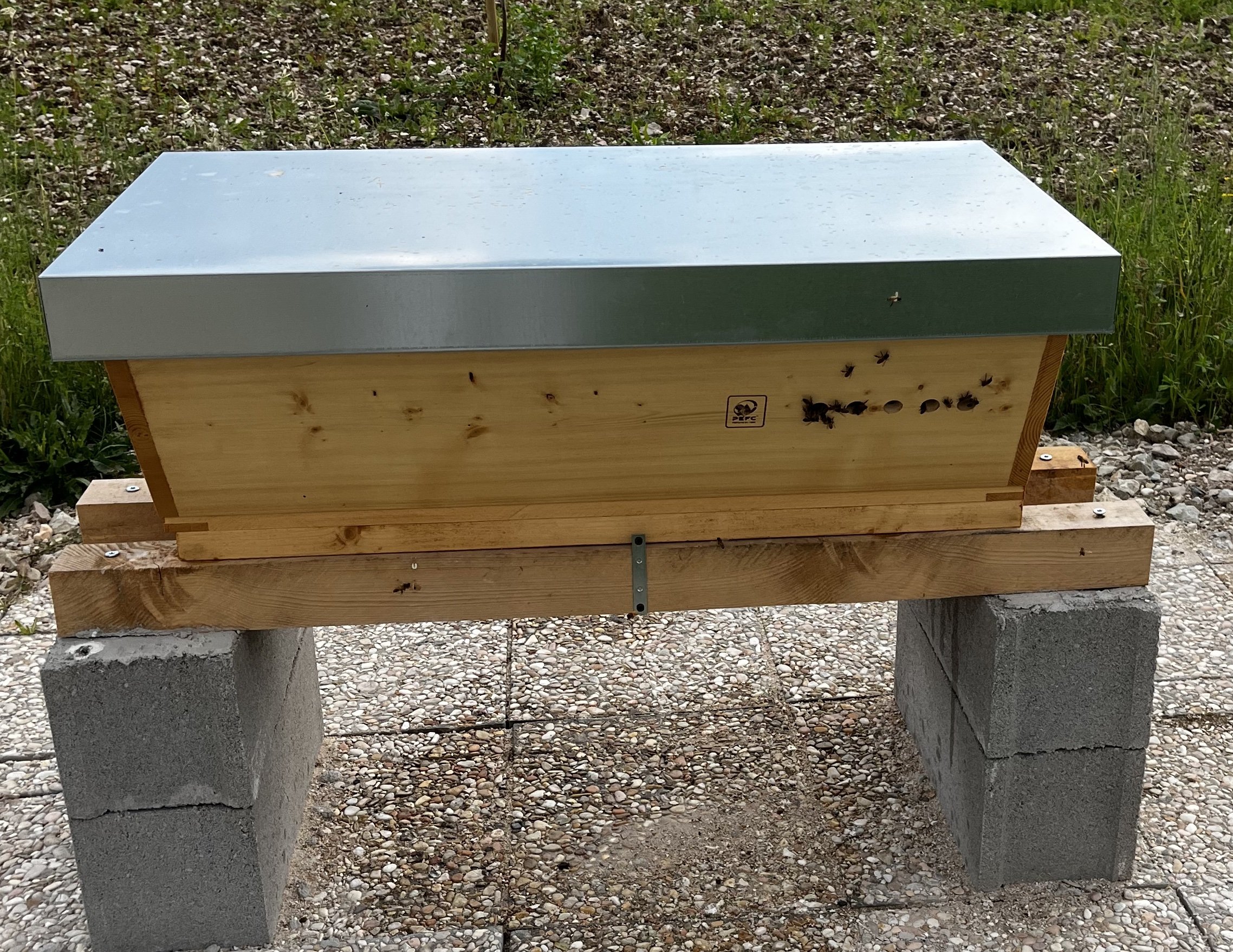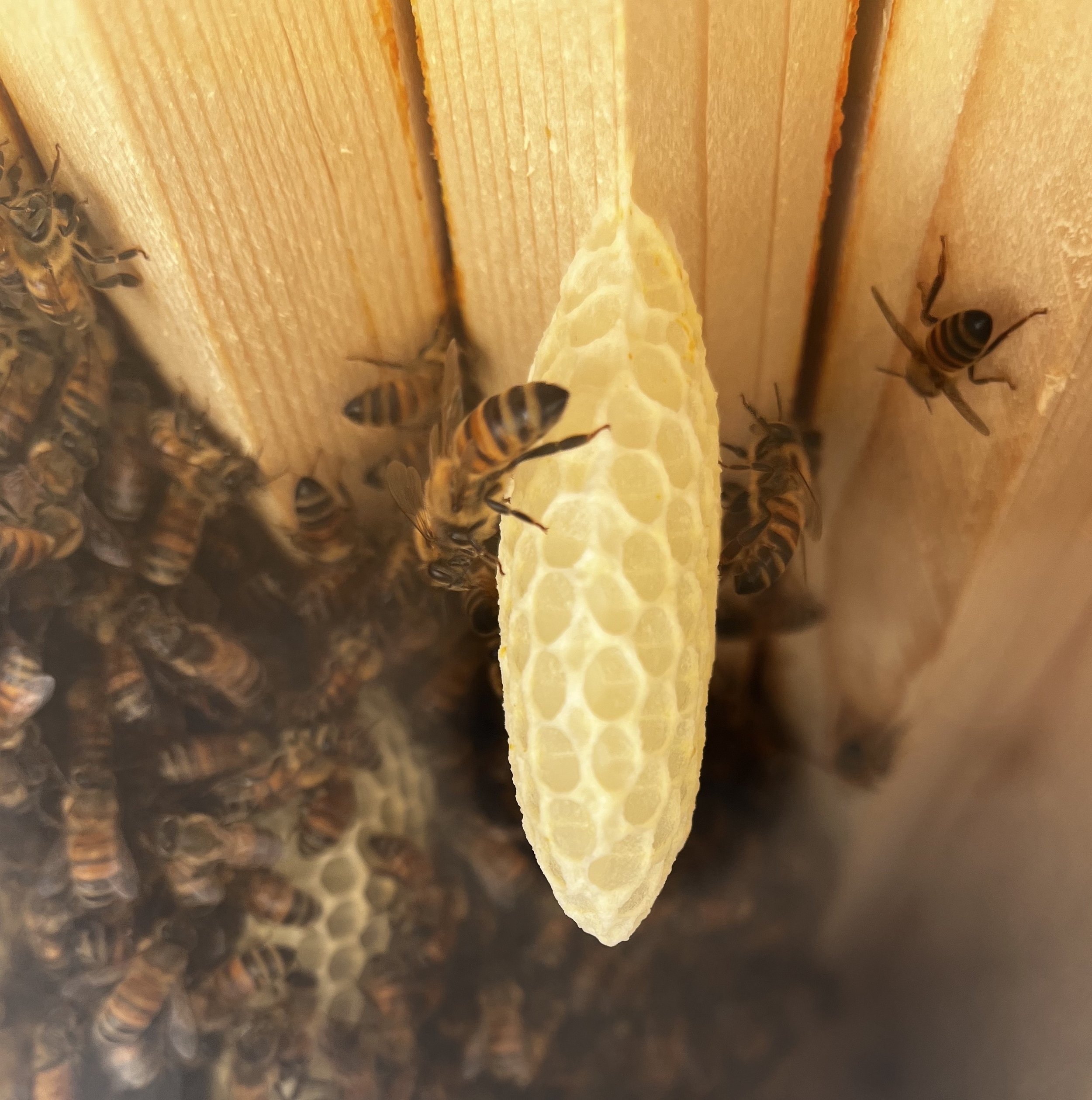Apicentre’s Approach
Apicentre’s approach is grounded on three components to ensure a thriving honeybee colony can be established:
Permission to access unused land
First of all, we need to ensure there is available, unused land we can repurpose with the owner’s consent. This enables our experts to ensure it can be ploughed and sowed with dedicated pollinating flowers that between the months of March and November the bees can use on a rolling basis as an immediate source of food. We select a seed mix bearing in mind local fauna, flora, and climate, respecting local biodiversity. At its simplest, this helps assure that bees in the wild can count on this food supply throughout the year.
Photo: Apicentre
Photo: Apicentre
Photo: Apicentre
A Kenyan top bar beehive
The hives that you may have seen are structured around the needs of beekeepers, designed for them to easily harvest the produce of the hive, such as pollen traps, or ready-printed wax honeycombs.
Kenyan Top Bar (KTB) beehives, instead, are different. They are made up of a large, hollow rectangular wooden crate, with small openings on two sides for the bees to come and go. The “top” of the crate is composed of a series of upturned wooden prisms, or “bars”: bees are free to build their honeycombs on these bars as they please, respecting their natural behaviour. These bars are usually covered with a lid, to protect the hive.
The bees are free to create and allocate space as they see fit, choosing between food reserves, new cells for their larvae, and other products of their hard work in the fields.
Apicentre endorses the bee-centric approach to hives of KTBs. We work with locally-sourced and FSC-certified materials to build the KTBs, including a small viewing window, to peer into the hive without being intrusive to the colony. Since we are not focused in accessing the hive to retrieve honey, KTBs benefit from reduced human manipulation - thus, the bees they host appear to be less aggressive towards visitors.
The Honeybees themselves!
There are several ways in which honeybees may take over the KTBs. While these hives may be taken over by a naturally-occurring bee swarm, it is possible to jumpstart the process by leveraging the local network to identify a swarm in the area. Otherwise, it is possible to acquire ready-made nuclei of native bees from bee-friendly beekeepers.
Photo: Apicentre




